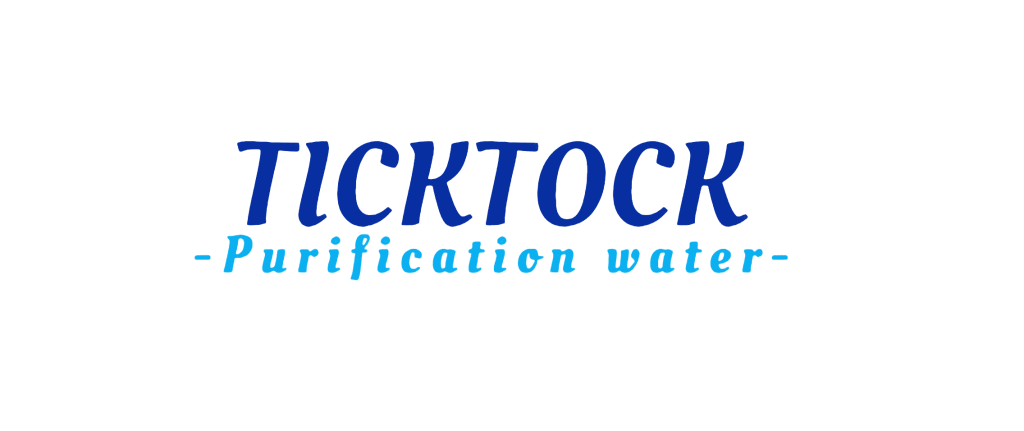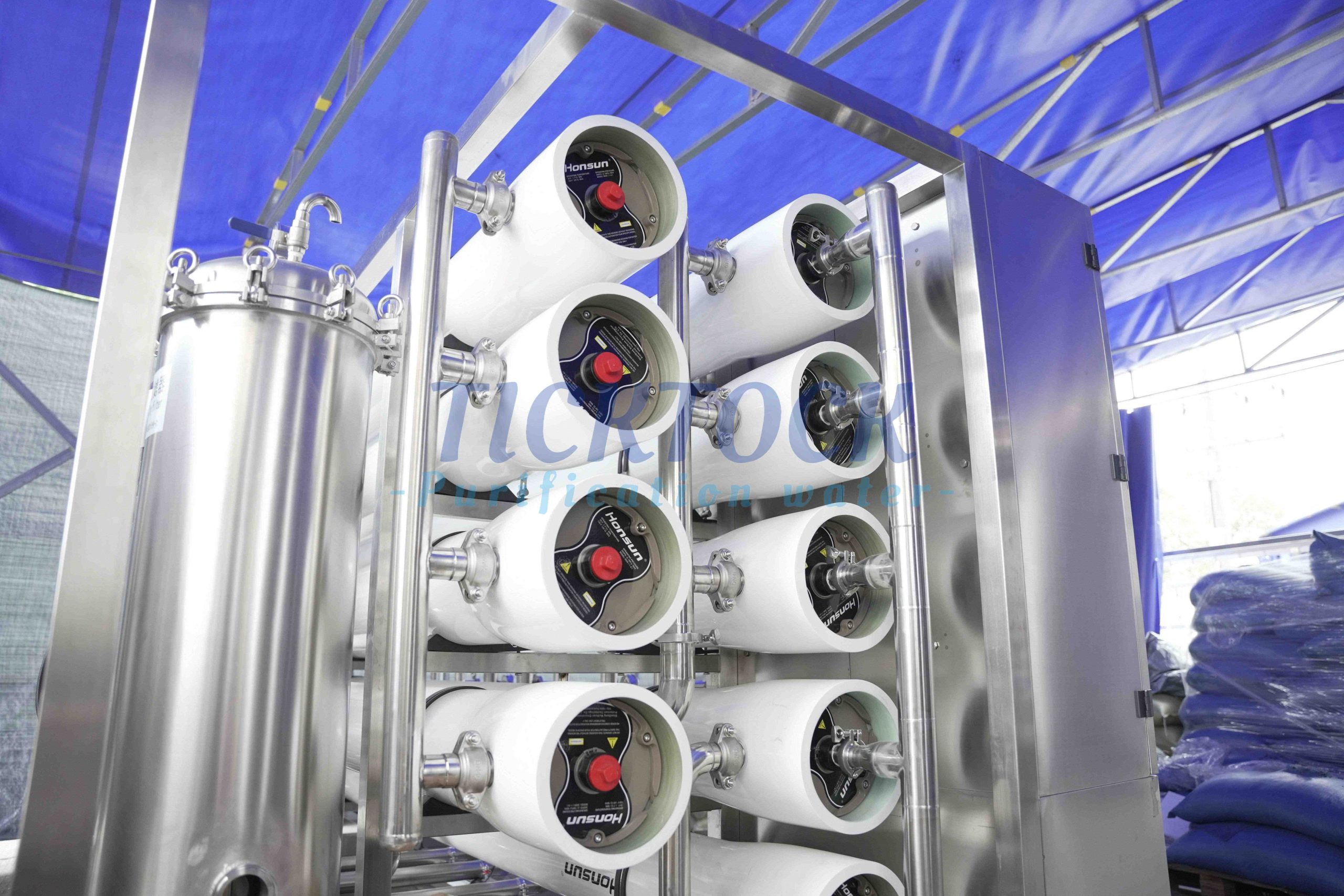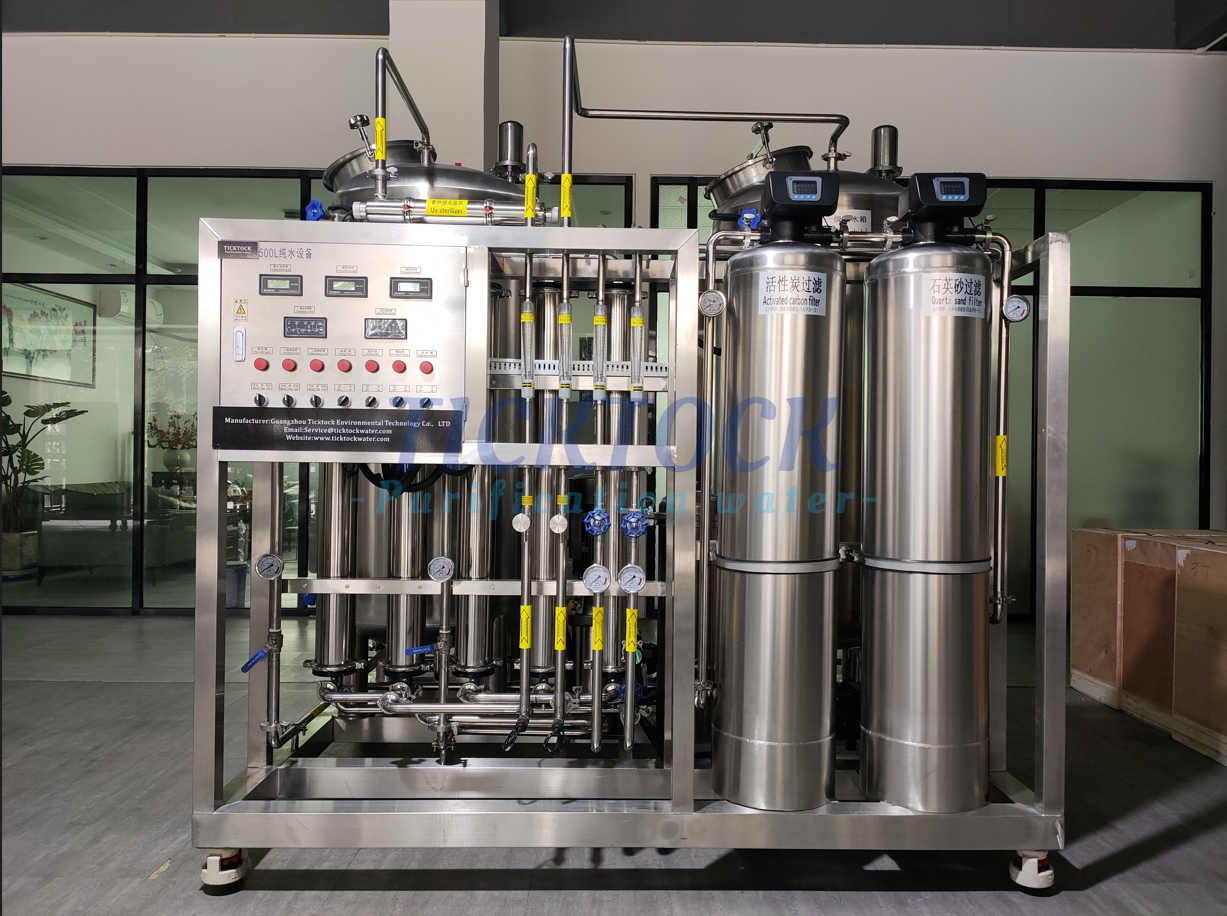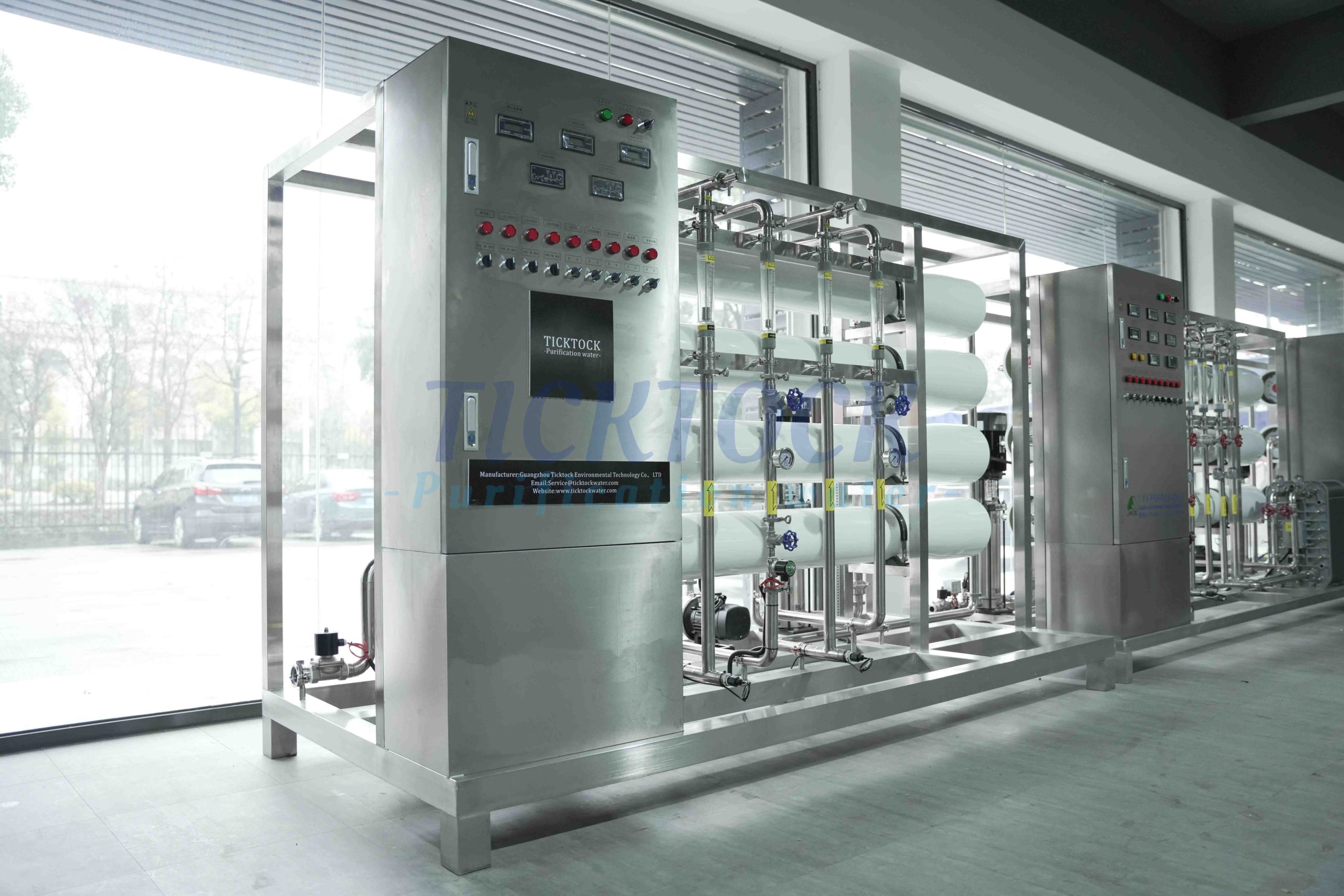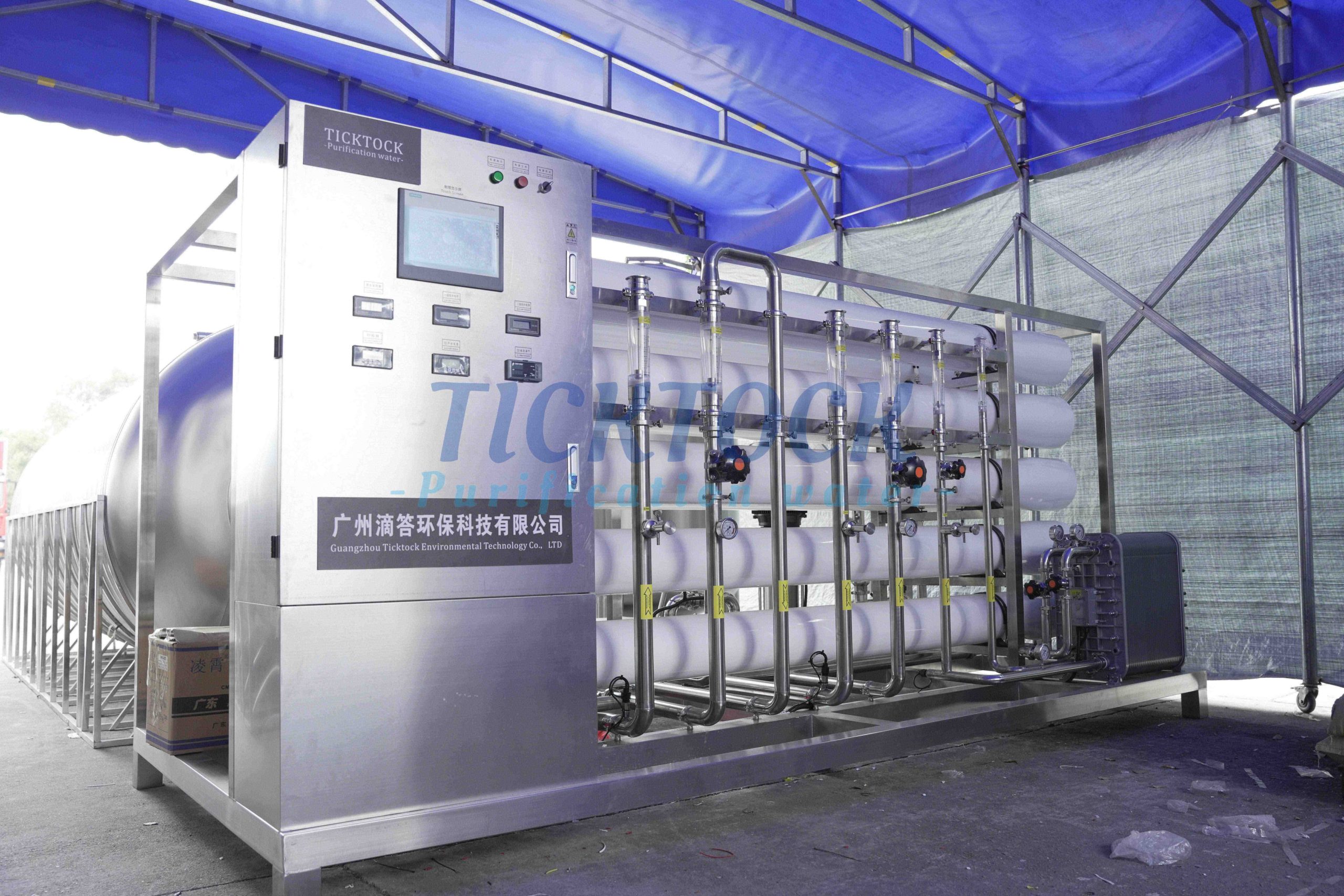1. Contaminant Removal Capability of RO Systems
Heavy Metals
RO systems effectively remove heavy metal ions (e.g., lead, mercury, cadmium, arsenic) with a removal rate exceeding 99% due to their semi-permeable membrane with a pore size of 0.0001 microns. For example, in electroplating wastewater treatment, RO combined with nanofiltration achieves 95.89% recovery of nickel ions and reduces copper (Cu²⁺) levels by 99.9%.Industrial applications, such as treating mining or chemical wastewater, also show similar efficiency.
Viruses and Microorganisms
RO membranes block 99.99% of viruses (e.g., norovirus) and bacteria (e.g., Pseudomonas aeruginosa), as their sizes (50–5,000 nm) far exceed the membrane’s pores. This makes RO-filtered water safer than boiling alone, which cannot address heavy metals or chemical residues.
Organic Compounds and Colloids
RO removes over 99% of organic pollutants (e.g., pesticides, dyes) and reduces chemical oxygen demand (COD) to <10 mg/L in textile wastewater treatment. Pretreatment steps like activated carbon adsorption further enhance efficiency by eliminating odors and residual chlorine.
2. Direct Drinkability of RO-Filtered Water
Safety Standards
Properly maintained RO systems produce water compliant with the WHO Drinking Water Guidelines, with total dissolved solids (TDS) <50 ppm.For instance,NSF-certified household RO purifiers are globally trusted, and NASA uses similar technology in space stations.
Key Considerations
Mineral Loss: RO removes beneficial minerals (e.g., calcium, magnesium). Long-term consumption may require dietary adjustments (e.g., calcium-rich foods).
Maintenance Risks: Neglecting filter replacement or membrane cleaning can lead to bacterial growth in stored water. Replace PP cotton filters every 3–6 months and RO membranes every 2–3 years.
High-Pollution Scenarios: In areas with severe industrial contamination, even RO-treated water should be boiled as a precaution.
3.Comparison with Other Technologies

4. Industrial Applications and Best Practices
Electroplating/Mining Wastewater: RO recovers valuable metals (e.g., nickel, copper) while reducing environmental pollution.
Textile Dyeing: Combined with ultrafiltration, RO achieves 93% salt removal and recycles water for reuse
Maintenance Protocols:
Pretreatment: Use sand filters, pH adjustment, and activated carbon to protect membranes.
Membrane Cleaning: Regularly remove scale and contaminants with chemical agents (e.g., citric acid for inorganic deposits).
Parameter Optimization: Adjust pH (4–7), temperature, and pressure to maximize efficiency.
5. Limitations and Innovations
Wastewater Generation:RO systems produce 1–3 liters of brine per liter of purified water. Solutions include reusing brine for irrigation or industrial processes.
Mineral Replenishment:Advanced models integrate post-treatment mineralization cartridges to add calcium and magnesium.
In summary, RO systems are highly effective for removing heavy metals, viruses, and organics, and their output is safe for direct consumption when properly maintained. However, users must address mineral loss and adhere to strict maintenance protocols.
Published by: TICKTOCK, Inc

